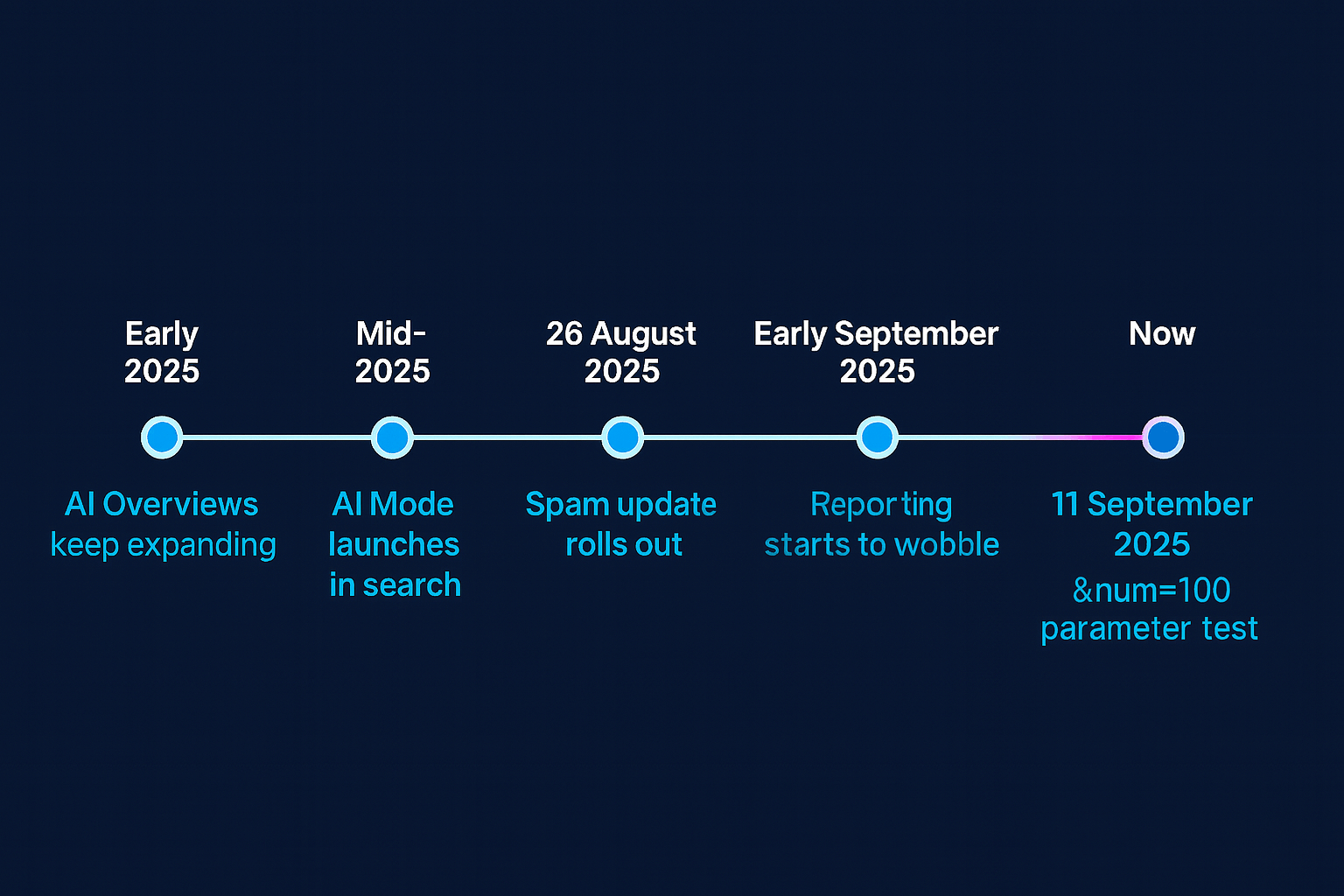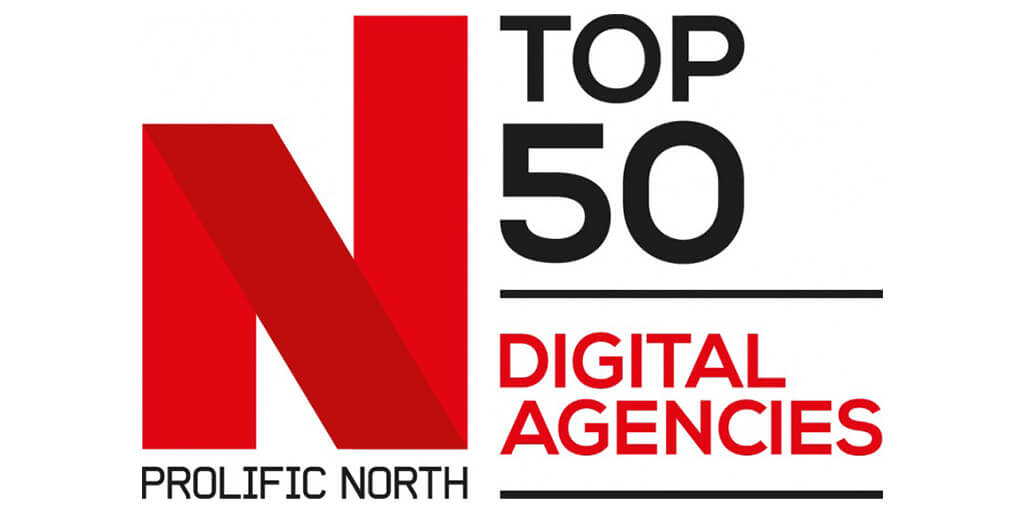If you’ve noticed some strange (and slightly scary) things happening in your ranking reports lately, you’re not imagining things. Google is testing the removal of the &num=100 parameter – the setting that lets us (and the tools we use) pull 100 results on a single search page.
It sounds small, but this tweak has already had a knock-on effect across the SEO world. Tools are breaking, reports are looking off, and some metrics aren’t adding up how they used to. Let’s unpack what’s happening and how you can explain it to clients or colleagues without setting off alarm bells.
What Google’s &num=100 parameter change means for SEOs
The short version: Google seems to be phasing out the ability to grab 100 results at once. Sometimes the parameter still works, sometimes it doesn’t, and whether you’re signed into Google may even play a role.
Because most third-party SEO tools lean on this parameter to collect rankings in bulk, they’re suddenly coming up short. A few platforms are already limiting their results to the top 20 or 30, while others are spitting out gaps or errors.
And the ripple effect is that reports that used to give a nice, clean view of top 100 positions are now showing strange dips, especially in desktop impressions, and shifts in average position. These changes don’t necessarily mean rankings have tanked, but they do mean we have to tread carefully when reading the data.
Why ranking reports and SEO dashboards may look wrong
Here’s the tricky part: when you’re showing performance reports to a client or stakeholder, these quirks can look like real declines. That’s the last thing you want when your job is to show progress.
Data beyond page two or three is now much less reliable. Some automated dashboards are suddenly less trustworthy. Even Google Search Console has felt a bit unstable since around 11 September 2025, which only adds fuel to the fire.
A timeline of why SEO reporting feels messy right now

- Early 2025 – AI Overviews keep expanding
Google has been steadily rolling out AI Overviews to more queries. These AI-generated summaries answer questions directly in the SERPs, which means more zero-click searches and less traffic flowing through to websites, even when those sites are still technically ranking.
- Mid-2025 – AI Mode launches in search
Google introduces AI Mode, giving users a more conversational, context-aware search experience. People can ask follow-up questions and get answers generated on the fly. For SEOs, this makes rankings less straightforward, because the search journey looks very different from traditional “10 blue links.”
- 26 August 2025 – Spam update rolls out
Google kicks off its August 2025 spam update worldwide. As usual, rankings start to shake, and many sites notice shifts in impressions across both desktop and mobile.
- Early September 2025 – Reporting starts to wobble
Not long after the spam update, SEOs begin spotting drops in impressions and jumps in average position. At first, it looked like real performance issues, but it quickly became clear that the reporting data itself was unstable.
- 11 September 2025 – The &num=100 parameter test
Google starts testing the removal of the &num=100 parameter, which allowed tools to pull 100 search results on a single page. This test immediately breaks or limits many rank-tracking tools, making reports for deeper positions unreliable.
So while your SEO work might be chugging along just fine, the story your tools are telling could seem very different. This is exactly the kind of situation where clear communication makes all the difference.
How you can adapt reporting and client conversations
First, don’t panic. Focus on what you can control. Keep an eye on whether Google makes this change permanent, and test your rank tracking tools so you know exactly how they’re handling the shift.
When it comes to reporting, lean harder on the most reliable data – that would be the top 10 to 20 results. That’s where the real traffic comes from anyway. If you need deeper analysis, you may have to gather data across multiple pages instead of relying on the old 100-result view.
Most importantly, get ahead of the questions, whether they’re coming from internal stakeholders or external clients. Add context to your reports, explain that sudden drops or odd position shifts are more likely to be data quirks than performance issues, and equip yourself and your team with talking points so they feel confident explaining it too. Transparency now will save you a lot of headaches later.
What you can do right now:
- Test how your rank tracking tools are handling the change
- Put more focus on the top 10–20 results in reporting
- Add context in reports to explain anomalies
- Prep your client/stakeholder comms
- Keep an eye on whether Google makes this change permanent
The bottom line for SEO
Google’s experiment with the &num=100 parameter is a reminder that we don’t control the playing field – we adapt to it. Yes, it’s frustrating when tools wobble and metrics look off, but it’s also a chance to show clients and colleagues that you understand the landscape and know how to navigate it.
At the end of the day, our job isn’t just to chase rankings, it’s to build trust and explain these changes clearly. Showing that you know what you’re doing about them also goes a long way.
If you want to dig deeper into the details, check out this write-up from Search Engine Roundtable.







